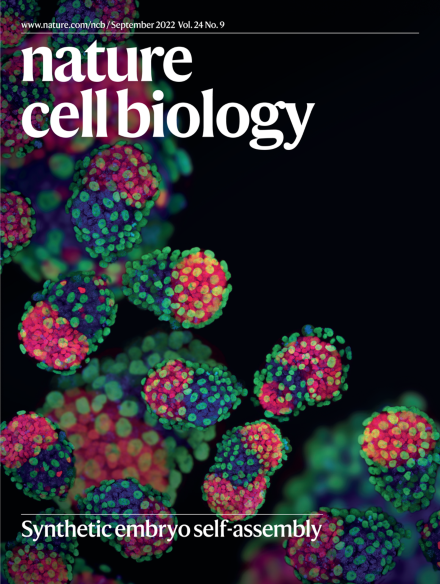A lysosomal surveillance response to stress extends healthspan
IF 19.1
1区 生物学
Q1 CELL BIOLOGY
引用次数: 0
Abstract
Lysosomes are cytoplasmic organelles central for the degradation of macromolecules to maintain cellular homoeostasis and health. However, how lysosomal activity can be boosted to counteract ageing and ageing-related diseases remains elusive. Here we reveal that silencing specific vacuolar H+-ATPase subunits (for example, vha-6), which are essential for intestinal lumen acidification in Caenorhabditis elegans, extends lifespan by ~60%. This longevity phenotype can be explained by an adaptive transcriptional response typified by induction of a set of transcripts involved in lysosomal function and proteolysis, which we termed the lysosomal surveillance response (LySR). LySR activation is characterized by boosted lysosomal activity and enhanced clearance of protein aggregates in worm models of Alzheimer’s disease, Huntington’s disease and amyotrophic lateral sclerosis, thereby improving fitness. The GATA transcription factor ELT-2 governs the LySR programme and its associated beneficial effects. Activating the LySR pathway may therefore represent an attractive mechanism to reduce proteotoxicity and, as such, potentially extend healthspan. Li et al. uncover a lysosomal surveillance response whereby intestinal lumen deacidification induces a transcriptional programme that boosts lysosomal activity and improves protein aggregate clearance in multiple worm disease models, extending healthspan.


对压力的溶酶体监测反应延长了健康寿命
溶酶体是细胞质中降解大分子以维持细胞平衡和健康的核心细胞器。然而,如何提高溶酶体活性来对抗衰老和与衰老相关的疾病仍然是难以捉摸的。在这里,我们发现沉默特定的空泡H+- atp酶亚基(例如vha-6)是秀丽隐杆线虫肠道腔酸化所必需的,可延长寿命约60%。这种长寿表型可以通过一种适应性转录反应来解释,这种转录反应以一组参与溶酶体功能和蛋白质水解的转录物的诱导为典型,我们称之为溶酶体监测反应(LySR)。在阿尔茨海默病、亨廷顿病和肌萎缩性侧索硬化症的蠕虫模型中,LySR激活的特征是溶酶体活性增强,蛋白质聚集体的清除增强,从而提高适应性。GATA转录因子ELT-2控制着LySR程序及其相关的有益作用。因此,激活LySR通路可能是一种有吸引力的机制,可以降低蛋白质毒性,从而潜在地延长健康寿命。
本文章由计算机程序翻译,如有差异,请以英文原文为准。
求助全文
约1分钟内获得全文
求助全文
来源期刊

Nature Cell Biology
生物-细胞生物学
CiteScore
28.40
自引率
0.90%
发文量
219
审稿时长
3 months
期刊介绍:
Nature Cell Biology, a prestigious journal, upholds a commitment to publishing papers of the highest quality across all areas of cell biology, with a particular focus on elucidating mechanisms underlying fundamental cell biological processes. The journal's broad scope encompasses various areas of interest, including but not limited to:
-Autophagy
-Cancer biology
-Cell adhesion and migration
-Cell cycle and growth
-Cell death
-Chromatin and epigenetics
-Cytoskeletal dynamics
-Developmental biology
-DNA replication and repair
-Mechanisms of human disease
-Mechanobiology
-Membrane traffic and dynamics
-Metabolism
-Nuclear organization and dynamics
-Organelle biology
-Proteolysis and quality control
-RNA biology
-Signal transduction
-Stem cell biology
 求助内容:
求助内容: 应助结果提醒方式:
应助结果提醒方式:


